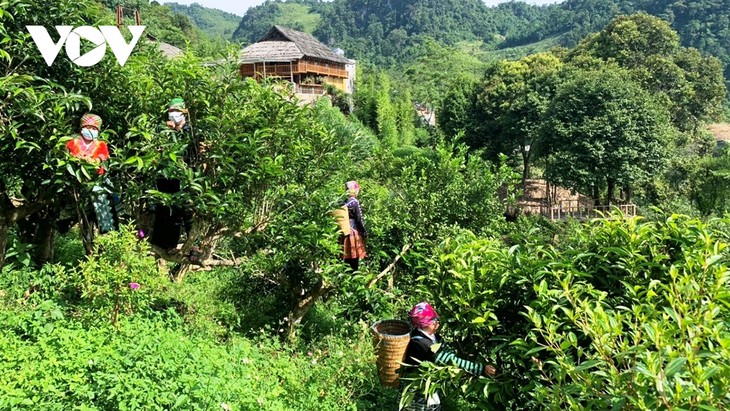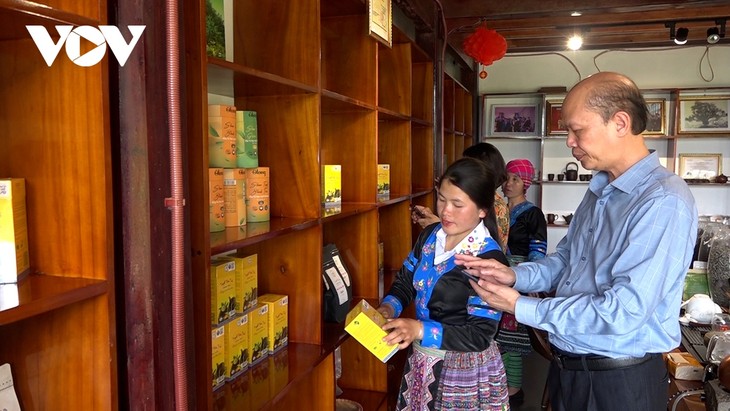(VOVWORLD) - Mong ethnic families growing tea in Suoi Giang commune, Van Chan district, Yen Bai province, are enjoying a bumper season. After months of winter sleep, the tea trees have absorbed the morning dews and sunlight on high mountains to sprout and bud and produce high quality tea leaves.
 Mong women in Suoi Giang commune collect tea leaves. (photo: VOV) Mong women in Suoi Giang commune collect tea leaves. (photo: VOV) |
The spring tea crop is the most-awaited harvest for the Mong in Suoi Giang commune. The spring crop doesn’t produce the biggest output in the year but it produces the most delicious leaves.
Song Thi Su, a resident of Suoi Giang commune, said: “I get up early in the morning, pack a rice box, and go to the tea hill around 8 o'clock. That’s the time when the dew is gone. If you pick the leaves too early, they will be wet. Normally, on sunny days, you can pick the leaves from 7:30 to 8 a.m. But when it rains, you should wait until 9 a.m. I’m very happy with the spring tea crop. It increases my family's income.”
 San Tuyet tea is processed into red tea, yellow tea, and white tea. (Photo: VOV) San Tuyet tea is processed into red tea, yellow tea, and white tea. (Photo: VOV) |
Suoi Giang commune currently has more than 40,000 Shan Tuyet tea trees, most of them hundreds of years old and several meters tall. An altitude above 1,200 meters, cloud cover all year round, a wide range between day and night temperatures, and special soil gives Shan Tuyet tea a unique fragrance and green color. The tea trees are grown completely naturally, without chemicals or fertilizer, so they are very pure, says Lam Thi Kim Thoa, Director of the Suoi Giang Cooperative.
“The ancient tea trees have good color, scent, and taste in the spring, giving all the tea products a very special scent. The spring crop is highly regarded by tea connoisseurs,” said Thoa.
San Tuyet tea is processed into red tea, yellow tea, and white tea. Nguyen Manh Linh, who is in charge of product development for Suoi Giang Cooperative, said: “When the tea leaves are brought to the factory, they must be fresh. We put them on shelves and fan them to keep them cool. Then they are sorted to produce white tea, green tea, black tea, and yellow tea.”